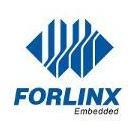Search the Community
Showing results for tags 'risc-v'.
-
As technology develops rapidly, smart devices play an increasingly important role in our lives. Have you ever wondered why your smartphone, computer, and other smart devices can run various complex software and applications? This is all thanks to the powerful processor architecture. Today, we will take you into an eagerly anticipated processor architecture - RISC-V. RISC-V originated from the University of California, Berkeley, and was created by a group of researchers including Andrew Waterman, Krste Asanović, and Yunsup Lee. Their vision is to break the closed design pattern of computer processors and provide an open and flexible instruction set architecture. Since its release RISC-V has received widespread attention in various fields and has become a highly praised architecture. Advantages of RISC-V: 1. Openness and freedom: RISC-V’s open-source allows anyone to use and customize it for free, without paying patent royalties. 2. Modularity and customization: RISC-V’s design allows developers to choose different modules and create custom instruction sets that meet specific needs. 3. Technological innovation: RISC-V’s openness encourages technological innovation and attracts the participation of many companies and research institutions. 4. Wide range of application fields: RISC-V can be used for embedded systems, IoT devices, servers, high-performance computing and other fields. RISC-V is an eagerly anticipated open-source instruction set architecture, with a wide range of application prospects. It represents the future direction of computer processor design, and its openness, freedom, and technological innovation make it have potential in multiple fields. To boost the development of RISC-V, Forlinx Embedded launched a new product - FET7110-C System on Module, which is the first product based on RISC-V architecture. FET7110-C SoM is based on StarFive’s 64-bit high-performance quad-core RISC-V JH7110 processor design and development, with high performance, multi-function, low power consumption characteristics, CPU stable working frequency 1.5GHz, Coremark score of 5.09 CoreMark/MHz, performance better than Cortex-A55. 7110 uses IMG BXE-4-32 MC1 architecture, provides powerful GPU processing capability, supports multi-channel video encoding and decoding, and supports rich functional interfaces such as 2 PCIe2.0, 2 Gigabit Ethernet, and 2 CAN2.0, making its application scenarios more extensive. In terms of power consumption, the FET7110-C SoM is divided into eight power domains that can be switched independently. By using software, the CPU frequency can be adjusted, allowing customers to dynamically control the power consumption according to different application scenarios. FET7110-C SoM is a versatile board for all industries and can be used in many industries such as industrial intelligence, smart surveillance, commercial electronics, smart home and power and energy. After rigorous testing, the FET7110-C SoM can provide stable performance support for customers' high-end applications. The emergence of RISC-V provides a new option. In the future, with the increasing demand for openness and customization, RISC-V is expected to continue to grow in different application fields. In particular, RISC-V is expected to gain more market share in embedded systems, IoT, education and research. Originally published at www.forlinx.net.
-
What is RISC-V? RISC-V has in the recent past attracted the attention of major corporations across the globe like Google, NVIDIA, and Qualcomm among others. It has thrown developers into a frenzy. What exactly is RISC-V though? RISC-V is an instruction set architecture (ISA) that is open source and based on RISC principles. In essence, an ISA is an interface between software and hardware. ISA defines the supported registers, data type, main memory hardware support, and the I/O model of implementation of the ISA. RISC-V was developed at the University of California Berkeley in 2010. It is a simplified architecture thus is well adopted for speed and low power operation. RISC-V based chips are therefore good for commercial applications. Getting started with RISC-V The LoFive FE310 The best way to get hands-on experience with RISC-V is through development boards that are based on RISC-V processors. One such board is the LoFive FE 310 by GroupGets LLC. The board comes with a RISC-V processor that can run up to 320 MHz. It also has 8KB of one-time-programmable memory, 8KB of OTM, 16kb of SRAM, and 16KB of instruction cache. The FE310 also has 3 independent pulse width modulation controllers, UART, SPI, and I2C. The board either has headers soldered to it or it can be soldered onto the carrier board where it can be used as the processor. It has an onboard QSPI flash that is provided through the IS25LP128 module. The flash module is 128Mbit, 16KB module. It can operate at SPI bus speeds of up to 133MHz if used in quad I/O mode. This flash module can be used for storage thus ensuring that there is sufficient space for storing apps or run-time data. The development board also runs on 5 volts which is further converted to 3.3V by the onboard SPX3819M5 which provides up to 500 mA. The FE301 does not draw much current so it can support other devices and sensors. All the design details of the FE301 for instance the schematics and BOM are readily available on GitHub. Setting up the development board There are numerous toolchains available for use with RISC-V depending on the board you choose. RISC-v SDK is available for Linux, Windows, and macOS. There two versions of SDK available, the legacy SDK, and the latest version. Use the latest version as it has a prebuilt toolchain and has OpenOCD for debugging. You can program the development board using several different ways. You could use the standard JTAG on the processor. You can access this through the LoFive-R1 expansion connectors. You can use any programmer that supports JTAG like SEGGER J-LINK. If you can’t find such, you can use a low-cost USB-to-serial converter like the FT223H-56Q mini MDL. The converter hosts all the connections and breakouts needed to interface to the FE301. RISC-V SDK uses general purpose Input/output available on the FT2232H-56Q to come up with the necessary JTAG connection to program the microcontroller. Below are the connections that need to be made between the LoFive-R1 and the ST2232H-56Q You can make these connections directly or using a breadboard. If you are using the development board for the first time, it’s prudent to install a bootloader on board. The bootloader is installed once and could be used to implement upgrades later. Summary RISC-V is ideal for developers intending to use open-source hardware architecture. There are numerous development boards one could use. Setting it up is also not difficult. The only shortcoming with it is that its ecosystem is not as rich as that of other microcontroller platforms. RISC-V is very intriguing though.
-
- fe301
- microcontroller
-
(and 1 more)
Tagged with:



